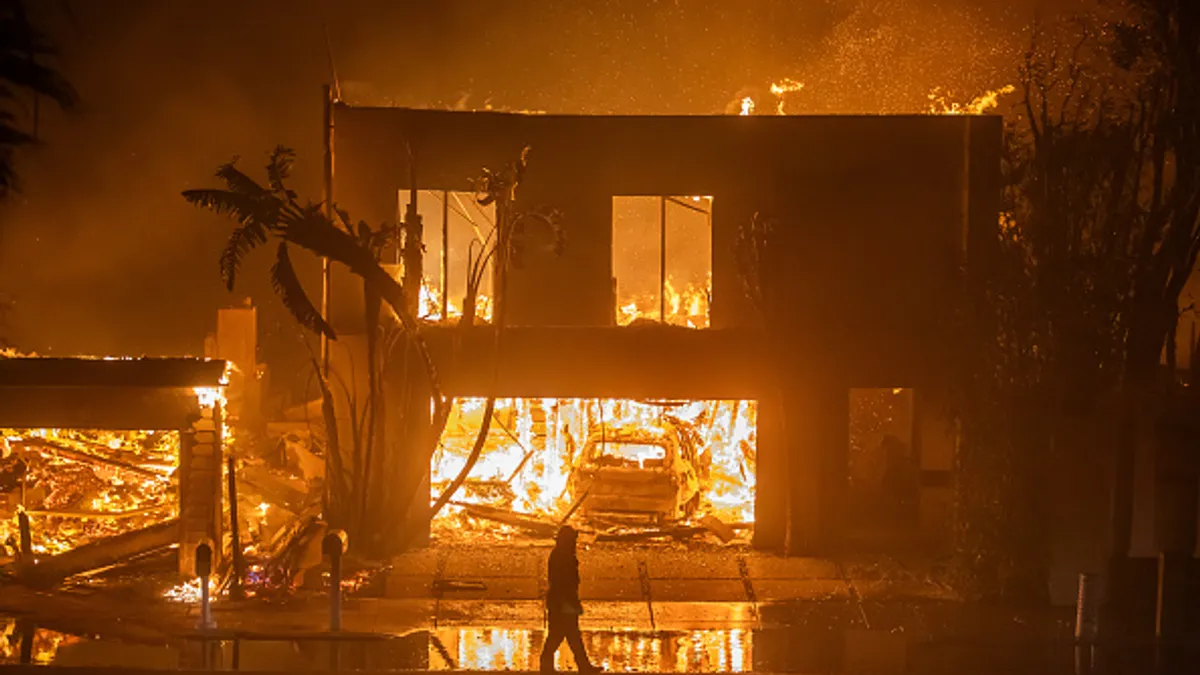Watch Duty, a smartphone app that alerts users about nearby wildfires and firefighting efforts, experienced unprecedented growth in January as wildfires spread throughout the Los Angeles metro region. Over three days, the app added 2.5 million users, Chief Product Officer Brian Harris said.
The nonprofit organization’s support requests increased from five to 10 per day to 250 across all channels, while its help center page views grew from 300 per day to 15,000. Watch Duty uses Zendesk to triage all inbound support requests.
“We consider this the offseason,” Harris said. “We weren’t expecting this to happen.”
The nonprofit organization, however, was “very, very prepared” for the sudden increase in customer inquiries despite the fires’ unexpected timing, according to Jason Maynard, Zendesk CTO of North America and Asia Pacific.
Watch Duty has invested heavily in self-service customer support, including a robust help center, to help answer frequently asked questions and reduce the number of support tickets fielded by its 15 full-time employees and 100-person volunteer network.
“They were able to manage that scale because they had created a whole bunch of useful resources on their help center,” Maynard said. “I don’t think their first reply times went above an hour during the first six days of the Palisades Fire. With a very small team, they were able to be highly responsive to their user base despite the unprecedented load on their system.”
Crisis management planning
Planning is essential to effective crisis management.
A crisis management plan should assign owners responsible for creating, communicating and maintaining the plan; define what constitutes a crisis; detail steps, roles and responsibilities, as well as staffing and training requirements; establish internal and external communications protocols; and identify how the organization will measure success.
These plans vary considerably across organizations because businesses, from software vendors to insurers, and their customers often have different needs.
Businesses also need to be prepared to respond to a range of crises, whether natural disasters, public health emergencies, service disruptions, security incidents, legal crises or public relations nightmares.
Support operations teams are often the “unsung heroes” responsible for managing crisis response efforts across many organizations and industries, Maynard said. Often the first to know about an issue, they gather information, prepare frontline workers and deal with customers directly.
“Those support operations teams are often the ones empowered to make changes and react quickly to situations, whether that's creating new content or building new workflows,” Maynard said.
However, they must partner with internal stakeholders like marketing, public relations, legal and IT as well as external constituents such as key customers and business partners to develop and implement effective crisis management plans, experts say.
Customer experience leaders may also need to partner with different business functions or staff depending on the crisis. A cyberattack, for example, may require a significantly different response than a public health emergency.
While many companies have a crisis management plan, “they’re probably not sufficient because they haven’t been put to the test,” said Bill Pearce, a faculty member at the University of California, Berkeley’s Haas School of Business, and former CMO at Del Monte and Taco Bell. Companies should pressure test their plans to ensure they can respond effectively when needed.
“You need to go through [a crisis] to realize where the weak parts are so you can fix it,” Pearce said. “Know that you're never going to be perfect, and that you always need to improve.”
Respond quickly, communicate effectively
During a crisis, businesses should aim to restore service as quickly as possible if it’s disrupted and communicate simply, accurately and consistently across all channels.
“It’s hard to overcommunicate,” Pearce said.
The nature and severity of the response should also match the facts on the ground, and balance short- and long-term business needs, said Pearce, who led marketing for Taco Bell during a well-publicized E. coli outbreak in 2006.
“Sometimes it's a light touch. Sometimes it's heavy touch,” Pearce said. “Each situation is different, but my belief was always you have to think long term. You have to fix what’s wrong in the short term, and you have to think about the impact in the long term.”
Businesses must also be careful to avoid deflecting or assigning blame during crises, especially when the facts on the ground are changing quickly, because it can worsen the response or cause a public relations nightmare, Pearce said.
“First, do no harm. Some companies do harm by trying to get ahead of the issues,” Pearce said. “With the wildfires in California, there was a race between who could blame climate change and who could blame the state of California for poor management.”
Customers will ultimately blame the company they’re doing business with for failing to meet their needs, no matter who’s at fault, experts say. Preparing for the inevitable is the best way to survive — and even thrive after a crisis.
For Watch Duty, preparation was the key to meeting customers’ needs as the wild fires rage.
“We had a lot of wildfires this year in Northern California,” Harris said. “Everything we’ve been doing up to this point has trained us to support this growth.”












